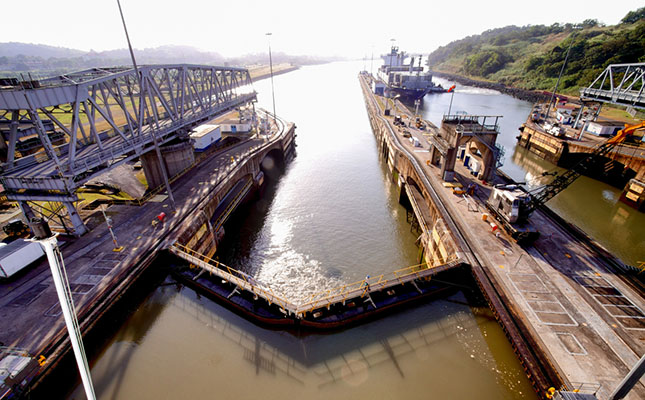Significant decreases in watershed levels means tighter enforcement in overweight cargo.
The long-term effects of low water levels in the Panama Canal is forcing some ocean lines to offload overweight containers in order to pass through the Panama Canal.
Last year, water depths in the canal reached such low levels not seen in the past 70 years that the Panama Canal Authority imposed weight/draft limits so cargo ships could safely pass through the canal. Any overweight or over drafted ships need to have some container offloaded and moved to another vessel. Overweight containers are typically targeted first.
As of February 15th, the Panama Canal Authority has imposed a freshwater fee to vessels over 125 feet with a fixed fee per transit of $10,000 and a variable fee ranging from one to 10 percent of a vessel’s toll. Money allocated in tolls will go toward water conservation efforts.
Worldwide Logistics Recommendations
This information is not a blanket statement for all customers. This is for anyone currently shipping overweight containers. If you are shipping overweight containers, please note this information:
- Heavy containers will be rolled first by all carriers for at least one sailing in the event of overbooking situation to UEEC. The following are some examples of G.W. guidelines recommended by some of our larger carriers for sailings through the Panama Canal:
- YML/COSCO: 7000KGS/20’GP AND 14000KGS/40’GP/HQ
- HSUD: 8000KGS/20’GP AND 16000KGS/40’GP/HQ
- EMC: Does not have a standard but they will offload the container according to actual situation so it is recommended to limit loading weight to no more than 8000KGS/20’GP AND 16000KGS/40’GP/HQ
Climate Change and the Economy
An analysis administered by the Panama Canal Authority released this year showed that 2019 was the fifth driest year in the area for last 70 years, with rainfall 20 percent below the historic average. At the same time, temperature rise has led to a 10 percent rise in evaporation from the reservoirs which supply the canal.
Panama is in the midst of its dry season which could last as late as July. The Gatún reservoir which supplies the canal the majority of its water, started out the season at a water level dangerously low to withstand the dry season. The reservoir began 2020 with a depth of 84 feet, 10 percent short of the amount needed to operate without restrictions during a typical dry season.
Over the last 10 years, total annual rainfall has dropped, however, extreme rainfall events are also bringing flooding during the wet season. Droughts followed by intense rain results in a water storage issue. Basins like Gatún reservoir have limits. Also adding to the shortage is a rise in water temperature in the supporting basins, increasing the rate of evaporation.
All these climate related issues demand new strategies in order to protect the Panama Canal, which sees more than 15,000 vessels traverse through the canal each year. The Panama Authority’s considerations include shrinking the size of the navigational channel, increasing desalination and building new water-saving basins.
In the meantime, imposing higher fees and changing its booking system is expected to nudge carriers to make better use of limited lockage water by sailing fewer larger vessels through the canal, thus, constraining demand. Lower drafts also force container lines to load lighter, reducing the economies of scale larger vessels bring and leading to carriers to consider alternatives.
Please contact your Worldwide Logistics Group representative with any questions as we continue to monitor this situation.

